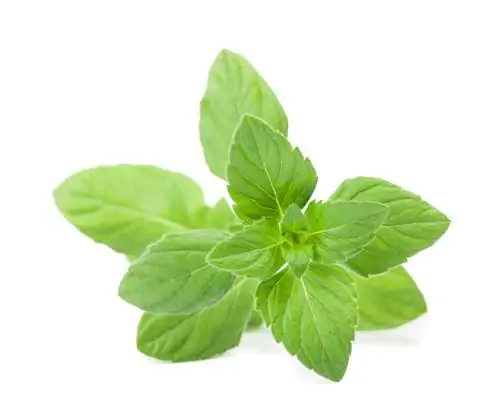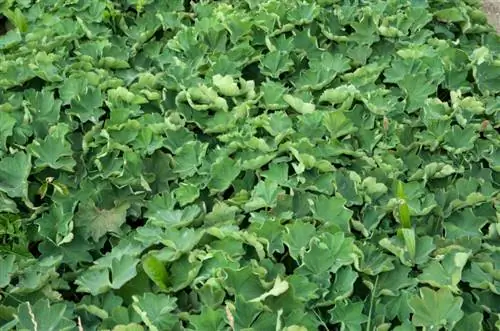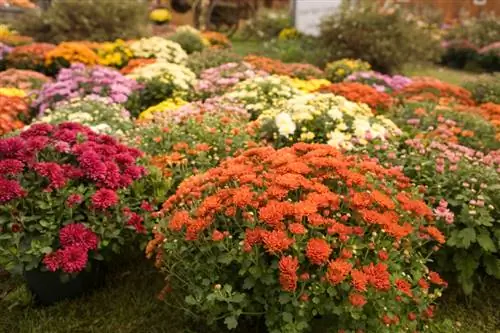- Author admin [email protected].
- Public 2023-12-16 16:46.
- Last modified 2025-01-23 11:20.
The stonecrop (Sedum), also known as stonecrop, does not have high location requirements. The plant thrives almost everywhere, whether in the garden or in balcony boxes. By propagating cuttings, you get many true-to-variety young plants, which, for example, provide enough material for elegant border planting. Older perennials can be propagated and rejuvenated by division.

How can the sedum be propagated?
The sedum can be propagated by cuttings, division or sowing. For cuttings, he althy leaves are cut off and dried. Division is done by dividing older plants in the spring. Sowing is done through seeds that can be collected in autumn.
Propagation by cuttings
As a thick-leaved plant, the sedum is best propagated via leaf cuttings; d. H. A single leaf is enough to grow a new plant. In this way, non-flowering shoots can be used wonderfully as cuttings. The best time to propagate cuttings is spring between April and May.
- Cut off mature, well-developed and he althy leaves.
- Let this dry for one to two days so that a protective layer of dry tissue can form at the wound site.
- Then place the leaves in a planting bowl with the stem base facing down.
- This is filled with a sand-peat mixture (€15.00 on Amazon).
- Only the base of the leaf is covered by substrate.
The cuttings can be planted in their designated place as soon as new leaves have formed.
Reproduction by division
Very large specimens can be propagated and rejuvenated in the spring by division. Plus
- use a digging fork to carefully dig up the perennial.
- Now remove the adhering soil (e.g. by shaking it off)
- and check the roots for any injuries.
- Now tear the plant apart with your hands.
- Alternatively, you can also use a spade.
- Each part must have at least one shoot and strong roots.
- Plant the divided plants immediately in the previously determined location.
- Water the young sedums thoroughly.
Of course you can also put the plants in pots.
Sowing stonecrops
If you want to collect seeds yourself, then simply leave the faded inflorescences and then - depending on the type and variety of sedum - collect the ripe seeds in October or November. In spring, simply sow the fine seeds large in the prepared soil (dig thoroughly and crumble finely) and moisten it. Since the sedum is a light germinator, covering it with soil or sand is not necessary. Alternatively, simply leave the seeds on the plant, as the fat hens sow themselves very reliably.
Tip
In addition, sedum sprouts are sometimes offered in stores, which are also simply spread widely and quickly take root.






